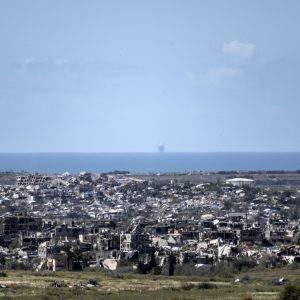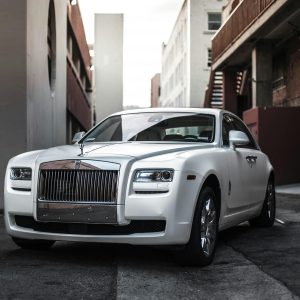Jeddah hosts Islamic Arts Biennale, redefining Saudi Arabia’s cultural identity
Biennale challenges conservative perceptions, blending contemporary art with Islamic heritage under Vision 2030
JEDDAH, Saudi Arabia (MNTV) – Saudi Arabia’s second Islamic Arts Biennale, And All That Is In Between, is reshaping the kingdom’s cultural landscape by merging religious heritage with modern artistic expression.
The event, held in Jeddah, is a key initiative under Crown Prince Mohammed bin Salman’s Vision 2030, which aims to foster cultural openness and redefine Saudi Arabia’s traditionally ultraconservative image.
The biennale takes place in the west terminal of King Abdulaziz International Airport, a space repurposed to showcase hundreds of rare artifacts and contemporary installations.
Among the most significant displays is a collection of Kiswa segments—the embroidered black cloth that drapes the Kaaba in Mecca.
These are presented alongside works from globally renowned institutions such as the Victoria & Albert Museum in London, the Louvre in Paris, and the Vatican Library.
One of the exhibition’s highlights is a medieval Quran inscribed in Hebrew script, demonstrating the historical interconnectivity of Islamic, Jewish, and Christian traditions.
Saudi artist and curator Muhannad Shono emphasized the event’s role in bridging historical and modern narratives.
“This convergence of past and present underscores the transformative journey Saudi Arabia is undergoing,” he said.
A major theme of the biennale is its challenge to artistic restrictions once imposed by Wahhabism, the kingdom’s historically dominant interpretation of Islam.
This school of thought discouraged the depiction of human and animal figures in art, leading to a tradition rich in geometric patterns and calligraphy.
The exhibition, however, showcases Persian-era royal portraits, AI-assisted mosaic compositions, and interactive installations that push the boundaries of Islamic artistic expression.
One of the standout pieces is a camera obscura installation by Franco-Lebanese artist Tamara Kalo, inspired by the 11th-century Muslim scholar Ibn al-Haytham, whose pioneering work on optics influenced modern photography.
Another powerful display is Italian artist Arcangelo Sassolino’s petrol-covered disc, symbolizing Saudi Arabia’s oil-driven economy and its evolving identity.
The biennale’s location, near the Hajj terminal, is strategically chosen to attract both art enthusiasts and religious pilgrims.
Its debut edition in 2023 drew nearly 600,000 visitors, close to the attendance figures of the Venice Biennale.
Organizers expect over one million visitors this year, including a growing number from international audiences.
Art historian Julian Raby highlighted the event’s global reach, countering long-standing perceptions of Saudi Arabia as a closed-off society.
Jordanian artist Raya Kassisieh, whose steel rose sculpture has captivated audiences, emphasized the importance of such a platform.
“We are capable of sharing space and dialogue with the West,” she said.
With initiatives like the Islamic Arts Biennale, Saudi Arabia is positioning itself as a cultural bridge between tradition and modernity, challenging past perceptions while fostering a new artistic identity on the global stage.











